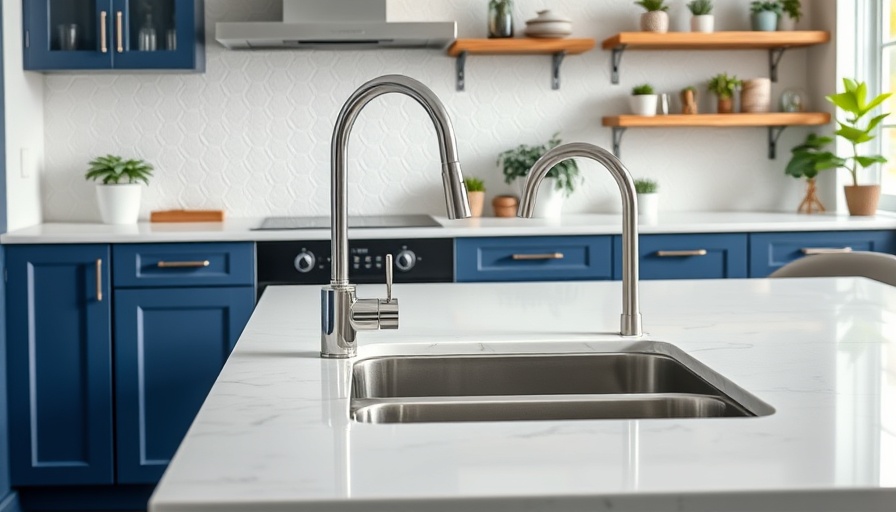
What Is That Mysterious Air Gap Next to Your Kitchen Faucet?
If you've recently moved into a new home or rental, you might have encountered an unusual fixture next to your kitchen faucet—the air gap. This seemingly odd, dome-shaped appliance often raises questions among homeowners. Most notably, you might wonder how it functions and its importance. The good news is that this little gadget is there to enhance the safety and efficiency of your dishwasher.
The Role of the Air Gap
The air gap serves two primary purposes. First, it ensures that wastewater from your dishwasher flows correctly down the drain after a wash cycle. Second, it acts as a barrier, preventing that dirty water from siphoning back into the dishwasher, which could potentially lead to contamination of your clean dishes.
California-based plumber Alex Atkinson describes it as a necessary protective measure: "The air gap creates a physical break between the dishwasher and the drain. That way, if the sink gets clogged and water starts backing up, it can’t siphon back into the dishwasher." This simple yet effective design enhances the overall hygiene of your kitchen.
How Does an Air Gap Work?
To understand how the air gap functions, it's essential to look at its setup. The air gap is connected to your dishwasher’s drainage system beneath the sink. During the drain cycle, a pump expels hot, soapy water through a hose that leads to the sink drain. This expulsion creates a layer of pressurized air in front of it; the air gap allows that air to escape, preventing blockages. Notably, if there are debris or other obstacles, the air gap will help keep the water flowing smoothly through the drain.
The air gap's position, high on the sink counter, is designed so that when the water is expelled, it rises from the dishwasher to the underside of the countertop, and then flows back down to the drain using gravity. This looping mechanism is effective in managing dishwasher drainage.
The Backflow Prevention Mechanism
The air gap also acts as a fail-safe when it comes to backflow. Should your sink drain experience a clog, any water trying to flow back toward your dishwasher will instead spill out of the air gap, preventing contamination. As Atkinson explains, "If your sink drain gets clogged and water tries to back up, it will simply flow out of the air gap and onto the countertop. This is undesirable, but it is far better than contaminating your dishwasher."
Do You Really Need an Air Gap?
The necessity of an air gap can depend on where you live. Some states mandate the installation of air gaps to promote sanitary practices in home plumbing systems. However, other areas may allow alternative plumbing configurations that may not require an air gap. It’s important for California homeowners to check local plumbing codes and regulations.
Understanding Local Regulations
In California, local municipalities often enforce strict plumbing codes aimed at promoting safer home environments. Before purchasing or renovating your kitchen, it would benefit homeowners to investigate whether installing an air gap is required or advisable. For example, areas prone to heavy rains often promote the use of an air gap as a protective measure against backflow.
Common Misconceptions About Air Gaps
Some homeowners misunderstand the purpose of air gaps altogether, believing these fixtures are optional. This misconception can lead to poor implementation of dishwasher drainage systems. The reality is that understanding the function of the air gap can help homeowners maintain their kitchens better and ensure appliances like dishwashers operate safely.
Conclusion: Prioritize Safety in Home Design
Overall, the air gap is a small but mighty component of your kitchen that plays a crucial role in maintaining a clean and safe space. So, if you ever find yourself pondering, "What is that thing next to my kitchen faucet?", know that it’s not just a whimsical design choice but rather an essential feature that protects your domestic hygiene. Ensuring your household is equipped with proper plumbing, including an air gap, is an investment in health and safety. Take a moment to check the functionality of your air gap and learn more about your household plumbing necessities to avoid any potential mishaps in your kitchen.
 Add Row
Add Row  Add
Add 




Write A Comment